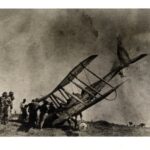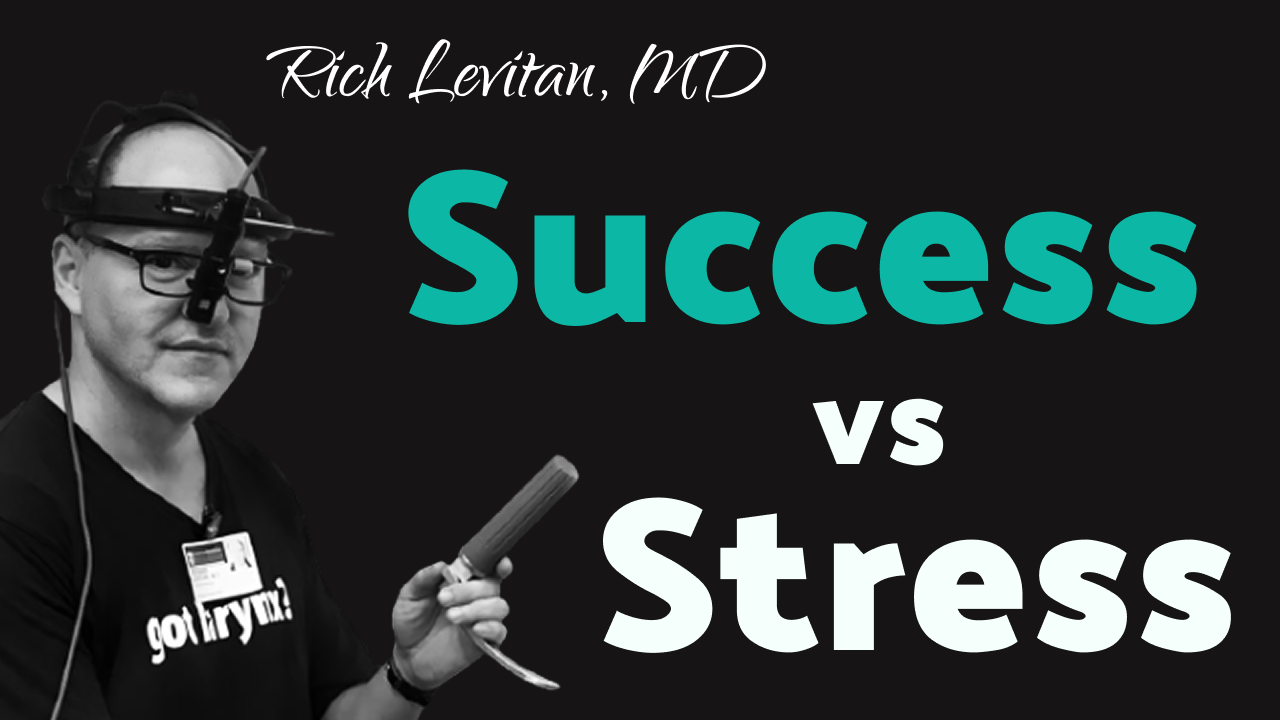In emergency medicine, we’re often told to “be smarter, try harder, and learn as you go.” But this approach is fundamentally flawed—and potentially dangerous in life-or-death situations.
“Learn as you go means you die,” notes airway expert Dr. Rich Levitan. “In every other human endeavor where life is on the line, we don’t accept this approach.”
The Problem with Traditional Medical Training
Unlike aviation, military operations, or other high-stakes fields, medicine has traditionally embraced variability in crisis situations. We send residents to the airway wall or cart where they choose from dozens of equipment options. We validate anecdotal expertise, allowing one provider to fail before another tries their “preferred technique.”
This creates unnecessary complexity that impairs crisis performance. Every added variable—different blade shapes, sizes, introducer options—creates exponential combinations that become overwhelming under pressure.
The Power of Engineered Simplicity
Instead of accumulating more tools and techniques, successful crisis management requires “simplicity on the far side of complexity.” This approach involves breaking every procedure into the smallest possible steps, making each step “achievable and believable.”
The Systematic Laryngoscopy Approach
For intubation, consider this engineered technique:
- Disable your grip (light grip, hold with two fingers)
- “Chicken wing” your elbow
- Open the mouth with digits one and three
- Insert the blade, midline on the tongue, without shoveling the tongue, and pause
- Mental mantra: “Uvula points epiglottis, dab dab dab”
- Identify the uvula
- Lead with suction, suctioning the posterior oropharynx
- Continue to slowly follow the tongue around with the Mac blade, continue to lead with the suction
- Uvula should point to epiglottis
- When you see the epiglottis, slowly advance until your in the valecula
- As you enter the valecula with the blade the hyoid ligament should engage, pulling the epiglottis up and revealing the vocal cords
- If despite this you are still having difficulty seeing the vocal cords apply external cricoid pressure
- If visualized cords ask for an assistant to hold pressure where you have it and pass tube
- If still no view attempt mac as miller by trying to hook the tip of the epiglottis with the blade and once cords are visualized, pass the tube
- If this is unsuccessful, attempt blind bougie placement by slipping the bougie just under the epiglottis and attempting to feel the trachea rings as you advance the bougie, if you hit a hard stop you have likely found the carina and are in the right position
This systematic approach reduces cognitive load during high-stress situations and provides a reliable mental framework when everything else feels chaotic.
Cricothyrotomy Reimagined
Traditional teaching says “find the cricothyroid membrane” as the first step—often impossible on larger patients. An engineered achievable and believable approach instead follows:
- Laryngeal handshake (rock the larynx to identify midline)
- Vertical midline skin incision
- Once all that soft tissue is out of the way, explore with non-dominant index finger until the cricothyroid membrane (CTM) is found
- If cannot locate CTM, extend the vertical incision caudally, find the “water bottle softness” of the trachea
- Move up the trachea to the cricoid ring and then the divot just above is the CTM
The first step must be achievable and believable. You cannot start a high-stress procedure by immediately failing to find a landmark.
The Psychology of Crisis Performance
Crisis performance hinges on the balance between perceived demand and perceived ability. When demand exceeds ability, providers experience:
- Increased heart rate and tunnel vision
- Auditory exclusion and tremor
- Loss of fine motor control
- Eventually, complete performance breakdown
The solution isn’t just more practice—it’s engineering your procedures to tip this balance in your favor through systematic preparation and simplified approaches.
Why Standardization Saves Lives
Dramatic equipment standardization dramatically improves outcomes. Instead of multiple blade types and sizes, successful programs use:
- One primary blade type (MAC 4 or 3 for most adult cases)
- One primary introducer design
- Consistent technique every time
Consider London HEMS: using only MAC 4 with bougie or surgical airway, their success rate reaches 99.99%. The same anesthesiologists in operating rooms with unlimited equipment options? Only 98% success.
The difference isn’t skill—it’s the elimination of decision fatigue and the mastery that comes from repeated use of identical equipment.
Mastering the Mental Game
Beyond equipment and technique, crisis performance requires controlling your internal narrative. Instead of catastrophic thinking (“What if I go too far?”), successful providers develop protective mental frameworks:
- “The cartilaginous cage will protect me” (during cricothyrotomy)
- “One step at a time” (during any complex procedure)
- “I have engineered this for success” (general confidence builder)
This mental reframing, combined with engineered procedures, creates achievable and believable steps that build confidence rather than erode it.
Anticipating and Preventing Common Errors
Successful procedures require understanding failure modes before they occur:
Laryngoscopy errors:
- Over-gripping the blade (leads to tissue embedding)
- Plunging too deep (creates “pink mush” visualization)
- Solution: Light grip, controlled advancement, systematic landmark identification throughout the procedure
Tube delivery errors:
- Picking up endotracheal tubes (ETT) incorrectly or at a different spot on the tube each time (creates unpredictable movement during insertion)
- Over-insertion past optimal depth
- Solution: Consistent grip on the ETT at predetermined depth markers (21cm for women, 23cm for men), allows for predictable and precise maneuvering of the tube every time as well as preventing over insertion because you know when your fingers hit the teeth you’re at the correct depth each time.
Surgical airway errors:
- Starting without clear landmarks
- Using incisions too small for the instruments
- Solution: First identify midline and make a vertical midline incision in order to allow landmark identification with less overlying soft tissue, adequate large incision size
The Science of Stress and Performance
When providers experience essential tremor, tunnel vision, or other stress responses, the solution isn’t to “try harder”—it’s to engineer better conditions:
Environmental optimization:
- Proper lighting (surgical lights, not portable lamps)
- Appropriate positioning (bed height, provider stance)
- Equipment preparation (everything ready before starting)
Physical technique:
- Elbow stabilization against the body
- Hand positioning for maximum control
- Tool selection that minimizes variables
Cognitive preparation:
- Step-by-step mental rehearsal
- Predetermined responses to complications
- Positive self-talk patterns
Training for Excellence
Effective training must mirror these principles:
High-frequency, low-stakes practice:
- Regular skill sessions using standardized equipment
- Realistic training models that teach proper anatomy
- Immediate feedback on technique refinement
Mental rehearsal:
- Visualization of successful procedures
- Scenario planning for common complications
- Development of personal mantras and frameworks
Progressive complexity:
- Master basic steps before adding variables
- Build confidence through repeated success
- Only introduce complications after fundamentals are solid
Building Sustainable Careers
Emergency medicine involves incredibly stressful situations. If you don’t address the perceived demand to perceived ability ratio and begin to tilt it in your favor by engineering achievable and believable solutions the accumulated stress of these situations will break you.
In addition we need to learn to let go of the CRAP, all of the things that we cannont Control Repair Alter or Prevent, if we do not learn to let go of and focus on what we can control we will not be able to find peace in this job.
Perhaps most critically, providers must actively counterbalance exposure to trauma and death with positive experiences— what Dr. Rich Levitan calls improving the “beauty-to-death ratio.” Emergency medicine extracts a psychological toll. Without conscious effort to seek joy, beauty, and positive experiences outside work, the accumulated stress of crisis situations leads inevitably to burnout and departure from clinical practice.
Practical Implementation Steps
For providers looking to implement these concepts:
- Audit your current procedures – Break them into the smallest possible steps, focus on engineering simplicity
- Standardize your equipment – Reduce variables to reduce cognitive load
- Develop mental mantras – Create positive self-talk for each procedure
- Engineer first steps – Make initial moves achievable and confidence-building
- Practice failure scenarios – Know how procedures typically go wrong and practice your response
- Optimize your environment – Control lighting, positioning, and preparation
- Maintain life balance – Actively seek positive experiences outside medicine
The Transformation
This systematic approach transforms not just individual procedures, but entire careers. Following these steps leads to:
- Increased confidence in high-stakes situations
- Reduced stress and anxiety during procedures
- Better patient outcomes through improved technique
- Greater job satisfaction and career longevity
- Improved team dynamics through consistent approaches
Beyond Individual Performance
When entire departments adopt these principles, the benefits multiply:
- Reduced variation in patient care
- Improved training efficiency for new providers
- Better resource utilization through standardization
- Enhanced team communication through shared frameworks
- Decreased medical errors through systematic approaches
The Path Forward
Excellence in crisis medicine isn’t about natural talent or unlimited equipment options. It’s about systematic preparation, engineered simplicity, and the discipline to practice fundamentals until they become automatic.
In a field where seconds matter and lives hang in the balance, we cannot afford to accept “learn as you go” approaches. Instead, we must engineer excellence through systematic preparation, standardized equipment, and proven techniques.
The goal isn’t perfection—it’s reliable and consistent competence when it matters most. By breaking complex procedures into achievable steps, controlling our mental game, and practicing systematically, we can transform both our performance and our careers.
When crisis strikes, we don’t rise to the occasion—we sink to the level of our preparation. The question isn’t whether you’ll face a difficult airway or life-threatening emergency. The question is whether you’ll be systematically prepared when that moment arrives.
For more airway education – The Art of Laryngoscopy
Dr. Rich Levitan’s airway courses and video library can be found at AirwayCam.com




